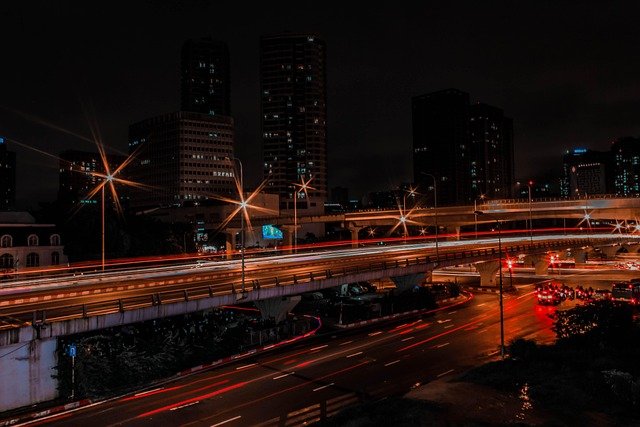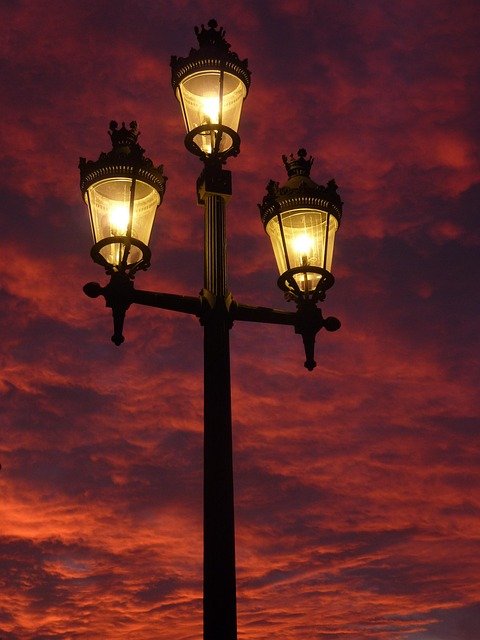Have You Ever Faced Unpredictable Street Light Behavior?
If someone observing that the streetlights turn on early, start flashing during the nighttime, or stay illumined even under daytime than this is a common photocell malfunction problem.
A photocell or dusk-to-dawn sensor plays a important role in outside illumination systems. It robotically shifts the streetlamp ON at dusk and OFF at dawn, guaranteeing energy savings and constant lighting. Though, when the photocell fails, it leads to needless power depletion, abridged system lifecycle, and greater upkeep expenses.
Based on widespread field understanding and feedback from international installations, Lead-Top engineers have identified six main reasons behind photocell malfunction and effective procedures to resolve them. Let’s explore each problem in detail and learn how to fix photocontrol errors for long lasted dependability.

Problem 1: Why Does Wrong Installation or Obstruction Cause Photocell Malfunction?
A street light controller problem time and again initiates at the fitting stage. Every photocell has a light-sensing window that must face open sky exposure. If the sensor window is obstructed by wires, walls, lamp housing, or dust, it can incorrectly sense low light, compelling the dusk-to-dawn sensor to stimulate early — even before dusk.
Likewise, if the photocell faces non-natural light sources or mirrors light from the fitting itself, it may constantly turn on and off. This cycling is one of the most usual photocell keeps turning on and off problems seen in outdoor fittings.
Решение:
- Always fix photocells according to the guiding arrow marks found on high-quality models like Lead-Top LT124, guaranteeing they experience exact daytime exposure.
- Choice photocells fortified with an OFF delay function (3–15 seconds). This characteristic averts false triggers from short term shades or passing objects.
- Clean the sensor lens occasionally to confirm constant performance.
Right placing can eradicate up to 40% of field breakdowns, demonstrating that installation precision is just as crucial as product quality.
Problem 2: Why Are Thermal Photocells Incompatible with LED Fixtures?
One of the most misinterpreted reasons of photocell malfunction rises from using the incorrect technology type. Older thermal photocells were appropriate for HID lamps but not for contemporary LED illumination systems.
LED lights draw much lower current, and thermal фотоэлементы depend on heat expansion for switching. Consequently, they may misinterpret electrical signals, switch unsteadily, or burn out too early. These fiascos are classic cases of street light controller problems that diminishes project proficiency.
Решение:
Shift to electronic-type photocells made exactly for LED fittings. Lead-Top offers numerous vigorous models for instance:
- LT134 – Features zero-cross switching for even current flow and prolonged lifecycle.
- LT154 – Controls high inrush currents from LED drivers, guaranteeing dependable beginning.
These photocells use CDS or IR-filter photodetectors that react correctly to real sunshine rather than heat or non-natural reflections. With electric photocells, you eradicate delayed switching, glimmer cycles, and short circuit issues common in old-fashioned designs.
Problem 3: How Does Insufficient Delay Time Cause False Triggering?
Have you seen your photocell keeps turning on and off when a cloud passes or a truck drives by? This problem shoots from inadequate time delay in the photocontrol system. Instantaneous reaction sensors can mistake brief lighting variations for sunset or dawning, causing frequent cycling and strain on both the photocell and the illumination fitting.
This speedy switching also rises energy consumption and decreases LED driver lifecycle — making this a expensive photocell malfunction over time.
Решение:
- Use photocells that integrate both ON and OFF time delays to stabilize operation.
- For instance, models with 3–15 second delay settings (like LT134) guarantee reliable performance even under inconsistent environmental situations.
- This characteristic averts the system from responding to short term shades, reflections, or light blazes, guaranteeing your dusk-to-dawn sensor only reacts to genuine day/night changeovers.
Problem 4: How Does Environmental Interference Affect Dusk-to-Dawn Sensors?
In municipal settings, glass buildings, polished metal surfaces, or neighboring light sources can replicate light on the sensor. This causes the sensor to misjudge the atmosphere, activating a nonstop ON-OFF cycle.
Here’s what happens in sequence:
- The light ON at sunset.
- Its own light reflects back into the sensor.
- The sensor senses illumination and turns OFF.
- The part blackens again — so it turns ON.
This never-ending circle causes severe wear on relays and power circuits.
Решение:
- Fix fail-mode ON photocells that remain active even when replication interferes.
- Add physical shields to block unintentional replications.
- Select models with filtered sensor heads that sense natural light wavelengths while overlooking non-natural brightness.
By monitoring environmental intervention, you can avert wrong triggers and stabilize your street light controller system for constant dusk-to-dawn performance.

Problem 5: How Can Wiring Errors or Unstable Voltage Cause Photocell Malfunction?
Improper wiring is one of the important technical causes of photocell malfunction. When a photocell is connected with loose terminals, it can act erratically — staying always ON, failing to switch OFF during daylight, or blinking intermittently.
Решение:
- Always follow correct wiring standards:
- Black = Line (L)
- White = Neutral (N)
- Red = Load (to lamp)
- Use wide-voltage-tolerant models (e.g., 105–305V AC) to handle voltage variations safely.
- Ensure a clean and regulated power supply by adding surge filters or stabilizers in unstable grids.
Problem 6: How Do Power Surges or Lightning Strikes Dmage Photocells?
Even when fitting and wiring are seamless, outdoor influences like lightning strikes, grid voltage spikes, or electromagnetic interference can terminate a photocell’s inner electric circuit. Once the control chip or relay burns out, the photocell turn into permanently ON or totally impassive — a grave street light controller problem.
- Select photocells with MOV (Metal Oxide Varistor) surge protection.
- Surge levels differ — standard models may handle 475J, but Lead-Top’s LT134 and LT124 can withstand up to 20KV / 10KA (1425J MOV), perfect for severe outdoor environments.
- For high-risk zones like freeways or coastline regions, choice models with extra EMI filters and reinforced housings.
What Makes the LT134 Photocell the Ultimate Solution to Malfunction Problems?
After evaluating these causes, it’s clear that not all photocells are built identical. The LT134 electronic photocell from Lead-Top is made to avert wrong triggers, voltage damage, and reflective interference
| Параметр | Спецификация |
| Диапазон напряжения | 105–305V |
| Задержка времени | 3–15 секунд |
| Тип датчика | IR Filter Photodetector |
| Защита от перенапряжения | Up to 20KV / 10KA (1425J MOV) |
| Сертификаты | UL773, ANSI C136.10, CE, RoHS |
| Приложения | LED, HID, CFL, Halogen, Induction lights |
| Рабочая температура | -40°C ~ +70°C; up to 96% humidity |
This model is extensively used crosswise community illumination, commercial marketplaces, industrial parks, and smart city lighting networks, proposing long lasted dependability and acquiescence with global principles.
How Can You Prevent Photocell Malfunction Altogether?
In conclusion, most photocell malfunctions don’t instigate from product faults — they rise from improper selection, poor fitting, environmental meddling, or voltage uncertainty. But all these problems are avertible with appropriate planning.
By affiliating with a dependable constructer like Lead-Top, you gain:
- Admittance to certified photocells
- modified configuration options
- OEM and ODM services for project-specific requirements
- Technical support for troubleshooting and system optimization
| Выгода | Описание |
| Certified Photocells | Get admittance to UL773, ANSI C136.10, CE, and RoHS-certified photocells guaranteeing security, compatibility, and international acquiescence. |
| Modified Configuration Options | Get modified voltage, time-delay, or sensor settings to counterpart particular environmental and regional project requirements. |
| OEM & ODM Services | Benefit from custom-made product design and branding to meet distinctive project or client requirements. |
| Техническая поддержка | Receive expert support for fitting, troubleshooting, and performance optimization to guarantee dependable job. |
When someone apply the right dusk-to-dawn sensor in the right environment, street light controller becomes cleverer, safer, and more energy proficient. Rather than struggling with photocell keeps turning on and off complaints, one will enjoy stable lighting, lower upkeep expenses, and extended fixture lifespan.







